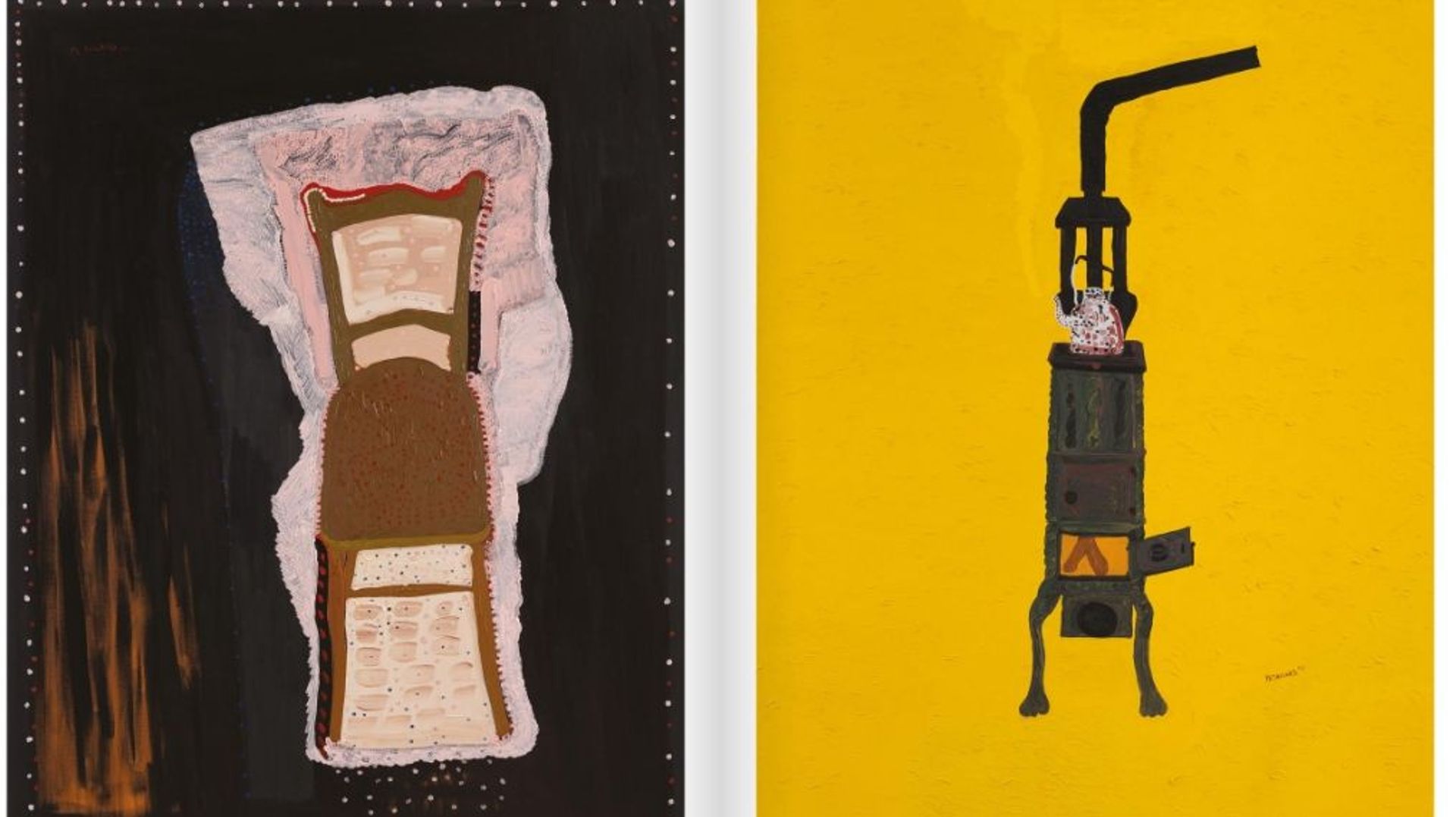
Lumberjacks, death and Christoph Blocher

Ferdinand Hodler is renowned for typically Swiss paintings such as "The Lumberjack" and "William Tell", but he also had a major influence internationally.
An exhibition entitled “A Symbolic Vision” is a collection of the artist’s works and is on display at the Bern Museum of Fine Arts. It is the brainchild of museum director Matthias Frehner and curator Katharina Schmidt.
The idea is to convey Hodler’s vision of harmony between man and nature. “We want to broaden people’s understanding of Hodler’s work,” Frehner told swissinfo.
Hodler, who lived from 1853 until 1918, is generally considered Switzerland’s national artist, having painted such quintessentially Swiss works as The Lumberjack, Battle of Marignano and William Tell.
It is no coincidence that a photo of The Lumberjack sits in the office of Christoph Blocher, the former cabinet minister and member of the rightwing Swiss People’s Party.
Blocher, a self-made industrialist billionaire-cum-art collector, is one of the biggest private lenders to the exhibition and is a member of its committee. But still smarting from his removal from the cabinet in 2007, Blocher had insisted that invitation cards bearing his name referred to him not as “former cabinet minister” but as “deselected cabinet minister”.
In response, the mayor of Bern pulled out of the exhibition’s opening, saying he was concerned that Hodler was being “politicised and exploited” by the People’s Party.
Inspiration
Some 150 works chart Hodler’s path from early realism to the symbolism characterising his later works.
Throughout his life he explored fundamental themes to the human condition: love, death, faith and hope. The characters in his pictures are always a part of something larger, linked to nature and the cosmos.
“Hodler had his roots in the art of the 19th-century, but he gave a significant boost to the avant-garde movement of his time and even the art of the 20th-century,” explained Schmidt.
Hodler’s international breakthrough came at an exhibition at the Vienna Secession in 1904. At the time he was more famous and successful than his Austrian contemporary, Gustav Klimt. That would change.
Life and death
In 1914 Hodler signed a protest against the German bombing of the Notre-Dame de Reims, the cathedral in northern France. As a result he was shunned by German museums and collectors.
One of Hodler’s most important works, “The Night”, is a gloomy illustration of sleeping figures. In the centre of the painting a man resembling Hodler, contorted with fear, backs away from a black, cloaked figure. Traumatised by the early death of his parents, Hodler was portraying the ubiquity of death in life.
That particular picture caused a scandal in Geneva in 1891 and was excluded from an exhibition. Not long afterwards it was shown in Paris, where it was appreciated as a significant example of symbolism. The work is part of the Bern exhibition.
Fascination with colour
The theme of death also marks Hodler’s final phase, to which an entire room is dedicated. From 1913 to 1915 Hodler witnessed the chronic illness and eventual death of his beloved Valentine Godé-Darel.
“I paint the human body when it is affected by emotions and every sensation has a gesture,” he said.
Not all Hodler’s works are gloomy. His later landscapes from the Lake Geneva region are peaceful, light and spacious. Hodler had been fascinated with colour since his early years. In these paintings he used it masterfully to portray his vision of an all-encompassing cosmic unity.
swissinfo, based on an article in German by Susanne Schanda
The exhibition at the Bern Museum of Fine Arts runs until August 10.
With a budget of around SFr2 million ($1.99 million), it is one of the most expensive in the museum’s history.
The Bern Cantonal Lottery Fund will cover a quarter of the costs. Other sponsors are Credit Suisse, Die Mobiliar, the Bern city government and the Ernst Göhner Foundation of Zug.
An international symposium and other events will accompany the Hodler exhibition in Bern.
The symposium on April 17-18 will deal with six books that explore Hodler’s personal history, themes and the artist’s historical position.
The show is organised by the museum in Bern, the Swiss Institute for Art Research and the Institute for History of Art at Bern University.
The exhibition will be accompanied by literary tours, workshops for children and a presentation by Zurich University Professor Elisabeth Bronfen.

In compliance with the JTI standards
More: SWI swissinfo.ch certified by the Journalism Trust Initiative
















![The four-metre-long painting "Sonntag der Bergbauern" [Sunday of the Mountain Farmers, 1923-24/26] had to be removed by a crane from the German Chancellery in Berlin for the exhibition in Bern.](https://www.swissinfo.ch/content/wp-content/uploads/sites/13/2025/12/01_Pressebild_KirchnerxKirchner.jpg?ver=bb19e376)














You can find an overview of ongoing debates with our journalists here . Please join us!
If you want to start a conversation about a topic raised in this article or want to report factual errors, email us at english@swissinfo.ch.